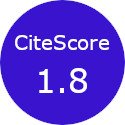Research on the Operation Plan of Urban Rail Transit and Suburban Railway Connection
Abstract
To improve through operation (TO) plans between urban rail transit (URT) and suburban railway (SR) systems, this study overcomes the limitations of traditional transfer modes in handling peak-hour cross-line (CL) passenger demand. We develop a passenger choice behavior model integrating cumulative prospect theory (CPT) and quantum decision theory (QDT). This model quantifies passenger decision-making under multi-attribute trade-offs (time, cost, comfort). A TO optimization model is established with dual objectives: minimizing passenger travel time and reducing operator costs. We propose a chaos-enhanced non-dominated sorting genetic algorithm (CNSGA) with opposition-based learning for solution derivation. Case study results show that TO schemes reduce total passenger travel time by 60.7% and operational costs by 30.1% compared to transfer-based connections. Sensitivity analysis reveals two key findings: (1) Passengers with higher time-value sensitivity prefer TO trains more strongly; (2) A higher proportion of such passengers improves the time-saving benefits of TO optimization. Although skip-stop strategies improve travel time for TO flows, they may negatively impact other passenger groups. This study provides a theoretical foundation for coordinated planning in hierarchical rail networks.To improve through operation (TO) plans between urban rail transit (URT) and suburban railway (SR) systems, this study overcomes the limitations of traditional transfer modes in handling peak-hour cross-line (CL) passenger demand. We develop a passenger choice behavior model integrating cumulative prospect theory (CPT) and quantum decision theory (QDT). This model quantifies passenger decision-making under multi-attribute trade-offs (time, cost, comfort). A TO optimization model is established with dual objectives: minimizing passenger travel time and reducing operator costs. We propose a chaos-enhanced non-dominated sorting genetic algorithm (CNSGA) with opposition-based learning for solution derivation. Case study results show that TO schemes reduce total passenger travel time by 60.7% and operational costs by 30.1% compared to transfer-based connections. Sensitivity analysis reveals two key findings: (1) Passengers with higher time-value sensitivity prefer TO trains more strongly; (2) A higher proportion of such passengers improves the time-saving benefits of TO optimization. Although skip-stop strategies improve travel time for TO flows, they may negatively impact other passenger groups. This study provides a theoretical foundation for coordinated planning in hierarchical rail networks.



